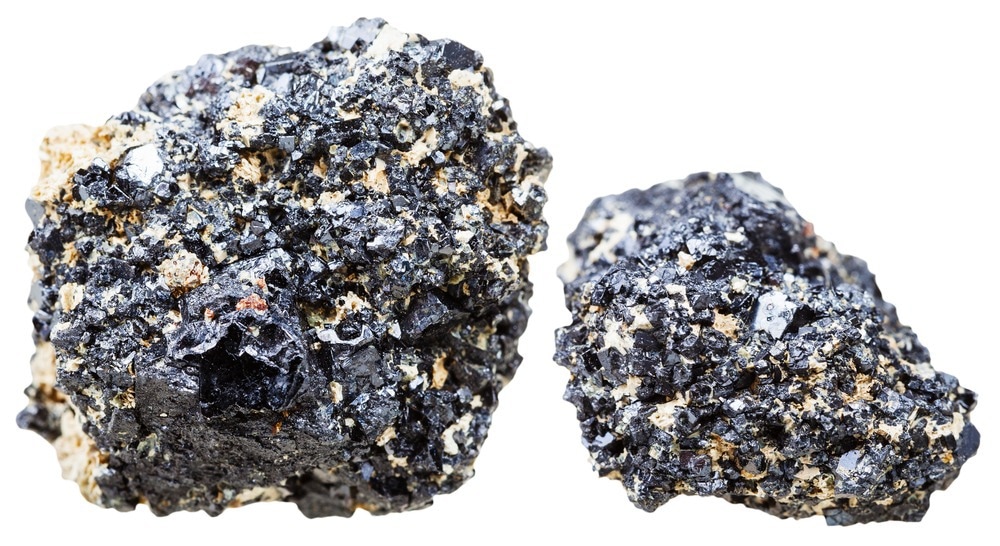In a paper recently published in the open-access journal ACS Energy Letters, researchers explored the impact of the addition of non-lead metal oxides/acetates on the growth of halide perovskite nanocrystals. The team also investigated the application of these nanocrystals as photocatalysts for CO and CH4 evolution during CO2 gas purge in a water/ethyl acetate medium.

Study: Lead Halide Perovskite Cube Coupled Star Nanocrystal Photocatalysts. Image Credit: vvoe/Shutterstock.com
Background
Recently, lead halide perovskite nanocrystals have been recognized as competent optical materials in energy applications. Substantial advances in research have been made to optimize the synthesis of these nanocrystals with tunable colored emissions. However, the primary nucleation fundamentals and growth control of such nanocrystals remain largely unexplored.
Furthermore, the faster growth coupled with the ionic nature of the nanocrystals has limited the understanding of shape modulations and secondary growth control pathways, which would help in the manipulation of the shape and facet control of the nanocrystals.
Halide perovskites have been widely researched for their application in light-emitting and photovoltaic devices, but there has been limited exploration for them to be used in catalysis since the dispersion of the nanocrystals in a polar medium is difficult due to moisture instability. Further understanding of reaction paths and catalytic processes along with designing appropriate and robust nanocrystal structures is warranted.
About the Study
In this study, the team evaluated the growth of CsPbBr3 cube coupled perovskite star nanocrystals from below 50 nm to over 500 nm in limited surface ligand and halide conditions. The nanocrystal formation was facilitated by the introduction of non-halide manganese (Mn) (II) or cadmium (Cd) (II) acetates or oxides in the reaction system. Furthermore, 200 orthorhombic CsPbBr3 facets were generated by using phenacyl bromide in a controlled manner. A second cube was then nucleated as a result of the formation of these facets that led to the cube coupling of the nanocrystals.
Surface ligands were reduced due to the Mn (II) or Cd (II) ions which then initiated the nanocube attachments in the epitaxial orientation within each nanocrystal. This growth of the nanocrystals exhibited a feeding frenzy-mannered mechanism where all the feed nanocrystals were consumed. The star nanocrystals with retained Cd (II), termed doped CsPbBr3, and those derived from Mn (II) medium, called pure CsPbBr3, were evaluated for their application in photocatalysis during CO2 reduction in water/ethyl acetate medium. Finally, this method was extended to generating CsPbCl3 nanocrystals.
Observations
The star shapes in the crystals were observed at a certain Cd (II) to Pb (II) ratio. Moreover, despite the cube and star nanocrystals being annealed together, the cubes dissolved gradually, with the star nanocrystals’ size increasing simultaneously. The continuous growth of the star nanocrystals completely consumed successive batches of cubes, indicating that the presence of Cd (II) ions is necessary to form the star nanocrystals along with feeding nanocubes that are smaller in size.
Transmission electron microscope (TEM) images of the mixture containing cube and star-shaped nanocrystals showed that after 30 seconds of their formation, the star nanocrystals grew to a diameter between <50 to 100 nm. However, after one minute, they had grown to over 100 nm in diameter. Observations after 5 min exhibited the consumption of all the cubes, with the star nanocrystals grown to more than 200 nm in size. Continuous feeding of the cubes for additional 10 minutes showed star crystal growth to about 500 nm.
Furthermore, X-ray diffractions (XRDs) confirmed the crystal phases. TEM images showing prominent connections of the nanocubes to the star nanocrystals indicated that the alignments and directions of fusing could not be correlated with Oswald ripening. This is because no monomer migration or ion transfer occurred through the solution medium, nor do the cube nanocrystals get reduced in size during annealing.
Additionally, catalytic measurements of both doped and pure CsPbBr3 showed that CsPbBr3 with about 3% doped Cd supported improved charge transfer reaction and thereby the catalytic activity compared to that of the pure cube or star nanocrystals.
Conclusions
To summarize, the researchers demonstrated the significance of metal oxides/acetates in obtaining star-shaped cube coupled CsPbBr3 perovskite nanocrystals. These nanocrystals could be obtained using various approaches which could also be used in the preparation of CsPbCl3 nanocrystals. The introduced Cd (II) ions could not be eliminated, leading to doped star nanocrystals. However, these doped nanocrystals showed better catalytic characteristics and could be implemented as photocatalysts in CO2 reduction reactions, with a reversal in the CH4 and CO evolution.
Moreover, the nanocrystals exhibited no substantial change in their phase, composition, morphology, and optical properties, indicating superior stability towards photocatalysis. According to the authors, the perovskite nanocrystals’ shape modulation, irrespective of their ionic nature, could be made possible, thus enabling the design of complex structures for different energy applications.
More from AZoM: How Does Laser Cleaning Technology Function?
Disclaimer: The views expressed here are those of the author expressed in their private capacity and do not necessarily represent the views of AZoM.com Limited T/A AZoNetwork the owner and operator of this website. This disclaimer forms part of the Terms and conditions of use of this website.
Source:
Bera, Suman, Patra, Avijit, Shyamal, Sanjib, Nasipuri, Diptam, Pradhan, Narayan, Lead Halide Perovskite Cube Coupled Star Nanocrystal Photocatalysts, ACS Energy Letters, 2022, 7, 3015-3023, https://doi.org/10.1021/acsenergylett.2c01486